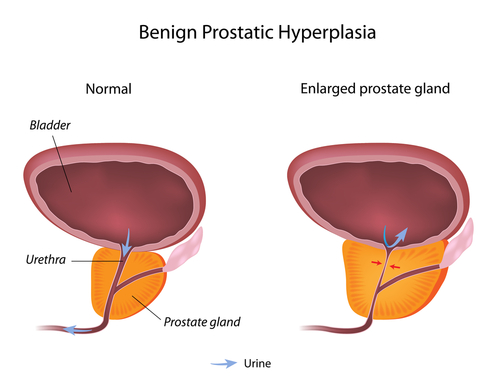 A new minimally invasive treatment for men suffering with benign prostatic hyperplasia (BPH) is being offered by Dr. Alex Shteynshlyuger, a board certified urologist and specialist in treatment of enlarged prostate and complex urinary problems, and one of the first urologists in the US to offer Urolift as a treatment for enlarged prostate, according to the New York Urology Specialists.
A new minimally invasive treatment for men suffering with benign prostatic hyperplasia (BPH) is being offered by Dr. Alex Shteynshlyuger, a board certified urologist and specialist in treatment of enlarged prostate and complex urinary problems, and one of the first urologists in the US to offer Urolift as a treatment for enlarged prostate, according to the New York Urology Specialists.
Lower urinary tract symptoms (LUTS) in men over 50 years of age may compromise a man’s quality of life and are commonly attributable to BPH. Treatment options such as transurethral resection of the prostate and laser-based alternatives are associated with symptom improvement, however they can result in morbidity rates as high as 20%.
Urolift is a new outpatient treatment option for the LUTS patient, which can avoid side effects of traditional endoscopic interventions, preserving both ejaculatory and erectile function. The device consists of a trans-prostatically tailored permanent implant made with common implantable materials.
In a clinical study, entitled “Prospective multi-center study elucidating patient experience after prostatic urethral lift” and published in the Canadian Journal of Urology, researchers designed a prospective, multi center, non-blinded, single arm clinical trial of the UroLift System, to characterize the perioperative subject experience following prostatic urethral lift (PUL) in 51 men older than 50 years of age suffering from LUTS and who had no prior BPH surgical treatment.
The results from the study demonstrated that all individuals were treated without any serious adverse effects and no case was abandoned or postponed due to physical discomfort. After 1 month of treatment, 86% of subjects had achieved high quality recovery, 90% reported improvement in their condition, and 75% would recommend the procedure to a friend. Furthermore, symptom response and sexual function were improved following the procedure.
The results from this study confirm Urolift as a procedure that can be tolerated under local anesthesia, requires only minimal use of postoperative catheterization and can significantly relief LUTS symptoms within 2 weeks after treatment.
For the patient, this minimally invasive procedure can translate into a significant improvement in quality life parameters and preservation of sexual function in men suffering from symptomatic LUTS secondary to BPH.

